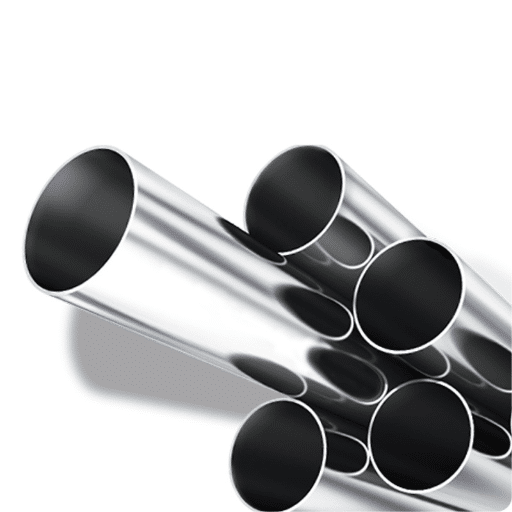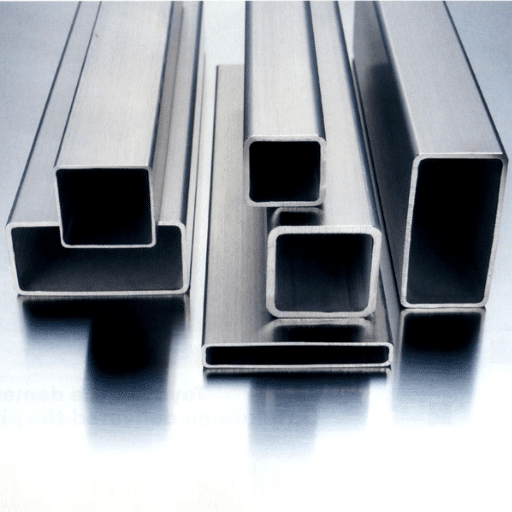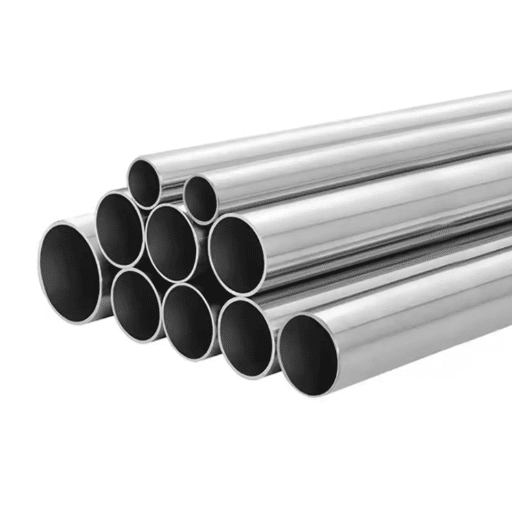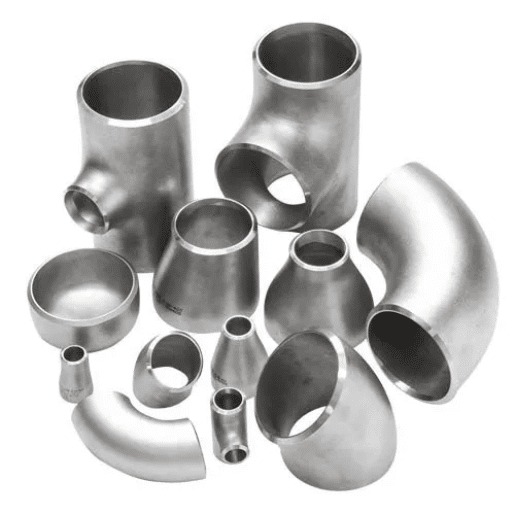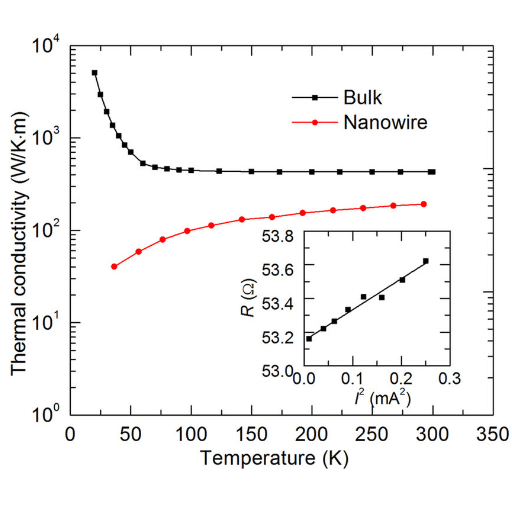Steel pipes are a critical part of many industries such as construction, energy, and manufacturing. Electric Resistance Welded (ERW) and seamless steel pipes are two of the most popular types of steel pipes. Knowing the difference between the two types of pipes is very important in choosing the right one for different purposes. This article seeks to explain in detail ERW and seamless steel pipes, their processes of production, benefits, and industrial applications. This knowledge will better equip readers in choosing the right pipes for their construction projects.
What is an ERW Steel Pipe?
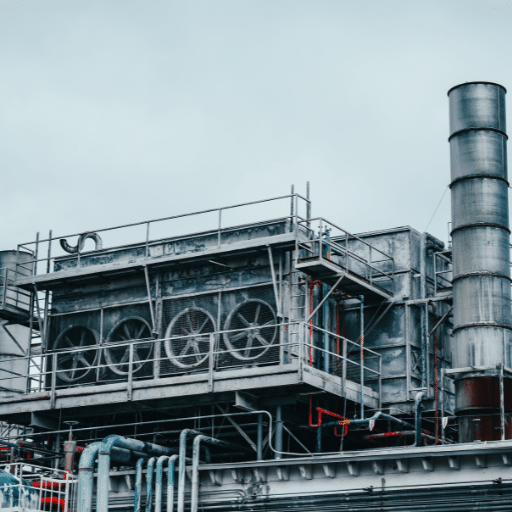
An ERW Steel Pipe uses a welding type that utilizes electric resistance. It is produced by feeding metal into a rolling machine as well as welding the longitudinal seam without any filler material. This form of pipe is used throughout the oil, gas, construction, and even water industries owing to its cost efficiency, smooth finish, and accurate dimensions.
How is ERW Steel Pipe Manufactured?
The ERW steel pipe manufacturing process is very accurate and organized. The first step involves unrolling steel coils and cutting them into strips of requisite width. The strips are then passed through a forming machine that transforms them into a cylindrical tube. A strong and seamless longitudinal weld is created when the edges of the tube are heated and
pressed together with high-frequency electrical current. During this process, no filler material is used, ensuring a smooth finish throughout the pipe. This process has proven to be cost-effective while remaining very accurate, which makes ERW pipes very dependable for various industrial uses.
What are the Key Characteristics of ERW Pipe?
- High Strength and Durability: ERW pipes are recognized for their robust construction, which allows them to withstand high levels of pressure and stress without failing in their functions.
- Uniform Wall Thickness: The unique manufacturing process guarantees uniformity in the wall thickness, which improves reliability and overall performance.
- Cost-Effectiveness: The low cost ERW pipes have, while having high quality, is the result of efficient production processes. Catering to different industries makes them an economical choice.
- Seamless Welded Finish: The longitudinal weld created during the manufacturing process is weld free which gives it a seamless smooth finish that enables better structural integrity.
- Versatile Applications: These pipes are popular due to their wide range of features, including but not limited to construction, infrastructure work, and the transportation of liquids and gases.
Applications of ERW Pipes and Tubes
I would gladly break down the various uses of ERW pipes and tubes in a very simplistic manner. Their strength, reliability, and cost-effectiveness all contribute to their wide application in different industries. Here are some key uses:
- Construction and Infrastructure
ERW pipes serve a vital function in the construction and infrastructure sectors as they are widely utilized in building frameworks. Their superior scaffolding strength and durability makes them useful throughout the application and makes them ideal columns and roof trusses. Moreover, their capability to withstand loads and environmental stresses assures long-lasting support throughout construction processes.
- Transportation of Liquids and Gases
ERW Pipes have many uses, but they are most well-known for the transportation of water, oil, and gas ERW pipes provide, as the name suggests, electric resistance welding which allows for smooth and seamless welded pipe finish, thus giving giving them a trust worthy means of transmission. Their corrosion resistance is another plus, especially for use in long distance pipelines.
- Automobile and Mechanical Industry
In the automotive industry, these ERW tubes are well known for being used in exhaust systems, chassis, and even the steering columns. Their strength combined with lightweight design is a big pro when it comes to minimizing vehicle weight, without compromising structural safety. For the mechanical industry, these pipes are used when constructing various equipment and machinery parts.
- Agricultural Applications
Modern agriculture benefits greatly from ERW pipes when it comes to irrigation systems and constructing greenhouses. For irrigation purposes, these pipes are easily formed into pipelines that can easily transport water from one field to another, making it more economical for farmers.
- Furniture Manufacturing
Chairs, tables, and even storage racks can all be constructed using ERW tubes. Their polished look and their robust structure make them ideal for both residential and commercial furniture.
The listed applications demonstrate the versatility of ERW pipes and tubes, as well as their importance in different sectors. Their low cost together with their economics and efficiency makes them the most sought after materials by manufacturers, designers, and construction workers.
What is a Seamless Pipe?
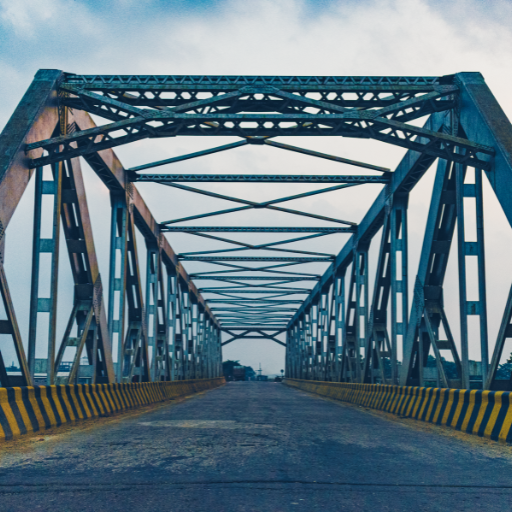
A seamless pipe is produced from a cylindrical solid metal block, which is first heated and then stretched and shaped into a tubular cavity. Like other rotary pipes, seamless pipes do not possess any welds or joints, which makes them a seamless single metallic unit. There are no seams to provide enhanced strength, uniformity, and resistance to pressure, making the seamless pipes reliable and durable for use in the oil and gas sector, automotive piping systems, and power generation plants industries. Parts that are not attached through welding are easier to withstand high levels of stress and changes in environmental conditions, which makes seamless pipes ideal for these industries
How is Seamless Steel Pipe Produced?
The creation of seamless steel pipes starts with a solid steel pipe, The very first step requires careful consideration. First and foremost, the billet gets heated to extremely high temperatures to soften the material. After that, the piercing or extrusion method can be utilized to transform the billet into a hollow tube. Enhanced rolling and finishing processes achieve defined measurements and surface treatment quality. This knowledge guarantees that the pipe is dependable, strong, and capable of enduring harsh applications. Having been a part of this industry, I can personally share the level of agility and precision needed at each stage to yield such a product.
Key Benefits of Seamless Steel in Construction
The use of seamless steel in construction has several important advantages. First and foremost is the strength and durability of seamless steel, as it is able to withstand considerable stress throughout its life. Also, there are no welded joints, which further weakens the structure, making the reliability of the steel much greater in terms of pressure and corrosion. Seamless steel also has specific features, including accurate measurements, which permit a better fit and easier installation. With so many benefits, seamless steel is undoubtedly one of the primary choices of modern construction.
Applications of Seamless Black Steel
I am able to assert without hesitation that seamless black steel is useful in numerous industries. Its exceptional attributes make it ideal for piping projects and other infrastructure operations where the reliability and strength of the material earn paramount significance. In addition, it specializes in the automotive industry for producing parts requiring great strength to be exerted on them. Seamless black steel is also widely used in heavy machine and industrial apparatus construction, where such robust defiance of destruction is unmatched. Its diversity and strength guarantee its position of preference in the industries in contemporary times.
What is the Difference Between ERW and Seamless Pipes?
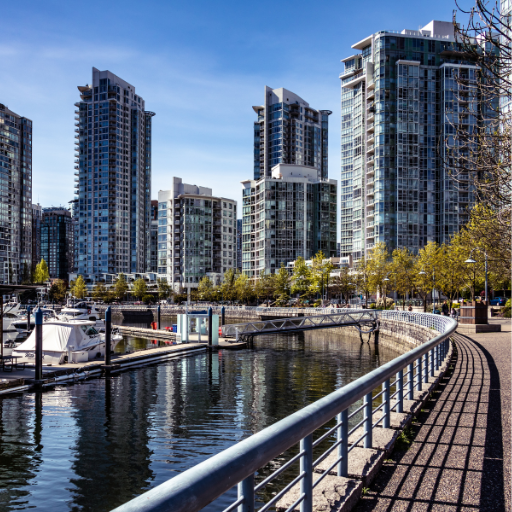
The difference between ERW (Electric Resistance Welded) and seamless pipes is mainly in their processes of construction as well as in their resultant possess structure. ERW pipes are manufactured by rolling a metal and longitudinally welding the seam, which makes them easy to produce while also making them economically adequate for low to medium pressure applications. Seamless pipes, however, are produced by piercing a solid steel billet, which leads to a pipe that lacks a welded join, allowing for greater strength and reliability, fitting for high-pressure and high-temperature situations. In my view, the selection of ERW and seamless is more relevant in the case of specific requirements of a project, such as budget, application conditions, and pressure thresholds.
Comparison: ERW vs. Seamless Steel Pipe
Choosing between ERW and seamless steel pipes, I always start the process by auditing the requirements of the project. Each of the two pipes has distinct advantages, and the choice greatly depends on these fundamental parameters:
- Pressure Requirements
For projects within the range of moderate to low pressure, ERW pipes are usually adequate. Their cost efficiency paired with reasonable output makes them favorable. In the case of high pressure contexts, however, seamless pipes become optimal as the absence of a welded seam means these pipes are comparatively stronger and more dependable.
- Temperature Conditions
Seamless pipes are optimum at high temperatures as they structurally outperform the rest. Their robust construction means that, unlike ERW pipes, they do not weaken at the seams, which is a potential failure point.
- Material Consistency
Because seamless pipes are produced through piercing a solid billet, they have no joints and therefore have a uniform surface across the pipe, which makes them ideal for use in energy or chemical industries. ERW pipes do have welded joints, and although newer technologies have drastically reduced variation at the welded seam, they still remain.
- Budget Considerations
For less demanding situations, projects can benefit from using more attainable ERW pipes, especially considering their cost-effectiveness. Seamless pipes are more expensive due to the intensive labor needed to manufacture them, but offer unparalleled reliability for critical applications.
- Corrosion Resistance
Both ERW and seamless pipes can undergo processes to increase their resistance to corrosion, however, the choice of material (stainless steel versus carbon steel) and type of coating has a considerable impact on performance. This decision should take into account the substance that flows through the pipe, as well as the surrounding conditions to which it is exposed.
In any case, I suggest evaluating these parameters relative to the project scope prior to arriving at a conclusion. As an example, when installing a high-pressure steam system, seamless would probably be the better choice. However, in less extreme environments of water pipelines or structural applications, ERW could be used as a cheaper and dependable option.
Understanding the Welded Joint in ERW
An Electric Resistance Welding (ERW) pipe has a welded joint, which entails heating the edges of a steel strip with an electrical current and causing them to join together. As no filler material is applied, there is no tedious welding cleanup required. With the use of ERW, the weld produced has high precision, verging on quality assurance standards. These factors make ERW pipes ideal for oil and gas leaks, water pipelines, framework structures, and many more. ERW customers’ industries are constantly seeking high efficiency and resilient solutions, with a focus on structural durability and cost-effectiveness.
Why Choose Seamless Over Welded Pipe?
As far as glued seams and welded pipes are concerned, I normally suggest seamless pipes where high strength and dependability are a prerequisite. A seam is not welded on a seamless pipe, which means there is no chance of low-strength areas that could fail under high stress or extreme conditions. In addition, the lack of a welding seam offers high resistance to corrosion and stress. Therefore, seamless pipes are essential in highly critical areas such as oil and gas, power generation, and chemical processing. Although welded pipes are more useful in terms of lower cost and easy availability, I prefer seamless pipes for most projects where safety and long life are of primary concern.
How is Welded Pipe Different from Seamless Pipe?

The manufacture of welded pipes consists of rolling and welding a plate or strip of metal into a cylinder with a seam along the length of the piece. This seam may cause some loss of strength under pressure in comparison to seamless pipes. Seamless pipes, in contrast, are formed by extruding a solid piece of metal into a hollow tube without any welding. This results in a homogeneous structure which has superior strength and resistance to stress and corrosion. The decision of which type to use in specific tasks is dependent on the application, with seamless pipes being advantageous in high-pressure and critical environments, while welded pipes are more economical for less severe usages.
The Welding Process in ERW
As far as the welding process of Electric Resistance Welding (ERW) goes, I can say with ease that it is efficient and reliable for making welded pipes. The technique utilizes a current that passes through the edges of the steel strip that needs to be joined after being pressed together to form a bond. Because of this, there is no need for filler material, which allows for a continuous weld along the length of the pipe. In my personal experience, ERW is great for making pipes with constant diameter and wall thickness because of its structural and low-pressure functionality. But it is critical to mention that ERW pipes, despite performing well under normal conditions, do not fare well when placed in conditions that require extreme pressure or corrosion resistance.
How Resistance Welding Works
Resistance welding functions by the inputs of mechanical pressure and electrical energy to joints of metal pieces to heat and melt them together. The generated heat comes from the electric resistance of the metals to the passing electric current. There are no auxiliary costs of materials, such as filler metal or flux, so it is cost-effective for consistent welding in vast industrial fields, which is useful productivity-wise since this is one of the most efficient welding processes.
Advantages and Disadvantages of Welded Steel Pipe
As far as welded steel pipes are concerned, there are a multitude of benefits – economical, versatile, and customization is easier for construction, plumbing, and industrial pipeline works. From my standpoint as an industry professional, the efficiency of the manufacturing process makes these pipes welded cost-effective, as they require less material in comparison to seamless pipes. Moreover, custom lengths and diameters are easier to produce with welded steel pipes, creating greater design flexibility.
Nonetheless, there are still some negative aspects to take into consideration. Certain welded rod pipes joints, especially those where the weld is not executed properly, tend to have weaker welds which restricts their performance under high pressure or extreme conditions. Such pipes also tend to posses less structural uniformity compared to seamless pipes which is undesirable in certain critical applications. Irrespective of these drawbacks, the multiple advantages often make them the preferred selection in the vast majority of industries.
What are the Benefits of ERW Steel Pipe?
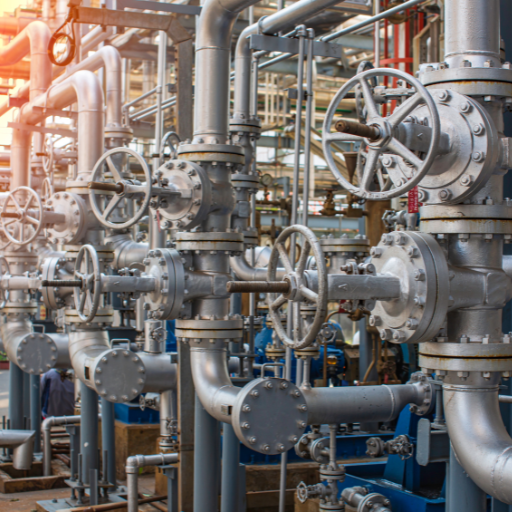
I can attest that the advantages of ERW steel Pipe are multiple, considering the reliability and versatility of the pipes. The manufacturing process of ERW pipes is very efficient, making it very cost-effective and ideal for a myriad of applications. The surface finish along with the wall thickness of the pipe,s, is uniform,m, which guarantees strength and durability. Furthermore, a smooth finish is aesthetically pleasing. Moreover, different sizes and specifications of ERW pipes give the pipes wide applicability in many industries like construction, infrastructure, energy, and water distribution. It is a good solution for projects that have high precision and excellent weld integrity requirements, the pipes provide consistent performance.
Cost-Effectiveness of ERW in Large-Scale Projects
The economical production process and decreased material wastage of ERW make them highly cost-effective for large-scale projects. The addition of reinforcements is avoided due to the uniform quality and strength of these pipes, further leading to reduced maintenance and replacement costs over the years. Moreover, the customization options paired with the availability of ERW pipes make the procurement and installation more efficient, which saves a lot of time and resources for large-scale projects.
Durability and Strength of ERW Welded Pipe
From my personal perspective of the industry, the main reason for the extensive utilization of ERW welded pipes is their unmatched durability and strength. These pipes are very dependable in a wide range of conditions, showing remarkable resistance to both attempted pressure and external interference. There is consistency in the production process, which greatly minimizes other risks such as inconsistencies or weak spots. These pipes are so strong that I have watched other industrial projects depend on ERW welded pipes for safety performance, even in the most challenging regions. For an endless list of industrial purposes, this combination of unfailing strength and reliable service makes ERW pipes an unmatchable choice.
Environmental Impact of ERW Process
Because of the increased concentration on sustainability today, I often talk about the environmental repercussions brought by the ERW process. In my opinion, as regards the manufacturing processes, ERW (Electric Resistance Welding) has its fair share of environmentally friendly benefits. Here are the primary aspects that confirm its favorable ecological impact:
- Energy Efficiency: The ERW process is more efficient in energy use because it employs localized heating through an electrical resistance. In other words, instead of the entire area of the pipe material having to be heated, only a specific part of it is heated which saves energy.
- No Use of Filler Materials: As opposed to other welding techniques, ERW does not need an extra filler to weld parts together which minimizes waste while at the same time, eliminating the need to acquire additional raw materials thereby enhancing the efficiency of resources.
- Minimal Waste Generation: Besides, the higher accuracy of the process means that very little material will be wasted. All these advantages are quite beneficial not only from a production point of view, but also in terms of the ecological impact of manufacturing processes.
- Reduced Air Pollution: Being that there is no open flame or excessive heat used in ERW, there is less emission of harmful gases such as CO2, hence the process has lower pollution levels. As a result, it is more environmentally friendly.
- Recycle-Friendly Process: The majority of ERW pipes are manufactured from recycled steel. The process also does not contaminate the steel, which could prevent it from being recycled, allowing for a more sustainable end product.
Considering these factors, industries utilizing ERW technology are able to reduce the environmental impact of production while maintaining quality standards. This is one of the reasons why I frequently suggest the ERW process to customers who wish to have optimal functioning of their systems due alongside sustainability.
Reference
- Oshwin Blog: Difference between ERW and Seamless Pipe
- Pearlite Steel: Difference between Seamless and ERW Stainless Steel Pipe
- Oil and Gas Piping Materials: Difference Between Seamless and ERW Pipe
Frequently Asked Questions (FAQs)
Q: What is the biggest difference between ERW and seamless steel pipes?
A: The biggest difference between ERW (Electric Resistance Welded) and seamless steel pipes lies in their manufacturing process. ERW pipes are made by welding the edges of the steel plate, while seamless pipes are produced through a process that does not require welding, resulting in a uniform structure without a seam.
Q: How is the manufacturing process different for ERW and seamless steel pipes?
A: The manufacturing process for ERW pipes involves forming a sheet of steel into a cylindrical shape and welding the two edges of the steel to form a pipe. In contrast, seamless pipes are created by extruding a solid billet of steel into a hollow tube, eliminating the need for welding.
Q: Are there specific applications where ERW pipes are preferred over seamless pipes?
A: ERW pipes are often preferred for applications requiring large diameter pipes, as they can be produced in larger sizes for erw steel pipe at a lower cost. They are commonly used in low to medium pressure applications, such as water and gas distribution.
Q: What are the advantages of seamless steel pipes over ERW pipes?
A: Seamless steel pipes offer higher strength and resistance to corrosion, making them suitable for high-pressure and high-temperature applications. Their uniform structure, free from welded seams, reduces the risk of leaks and failures under stress.
Q: Can stainless steel be used in both ERW and seamless pipe production?
A: Yes, stainless steel can be used in both ERW and seamless pipe production. Stainless steel ERW pipes are known for their durability and resistance to corrosion, making them suitable for various industrial applications.
Q: What are the common sizes for ERW steel pipes?
A: Common sizes for ERW steel pipes range from small diameters of around ½ inch to larger diameters up to 24 inches. The sizes for erw steel pipe can vary depending on the specific requirements of the application.
Q: How do the quality and cost of ERW pipes compare to seamless pipes?
A: The quality of ERW steel pipe generally includes good surface finish and uniform wall thickness, making them a cost-effective choice for many applications. However, seamless pipes often have superior strength and durability, which can justify their higher cost in demanding environments.
Q: What role does the pipe manufacturing process play in determining the properties of the pipe?
A: The pipe manufacturing process is crucial in determining the properties of the pipe. For example, the rolled steel used in seamless pipes contributes to their strength and uniformity, while the welding process in ERW pipes influences their cost-effectiveness and size flexibility.
Q: What is black steel pipe, and how does it relate to ERW and seamless pipes?
A: Black steel pipe is a type of carbon steel pipe that is uncoated, retaining its natural dark color. It can be produced using either ERW or seamless methods and is commonly used for transporting gas and water in residential and commercial settings.

